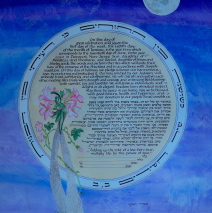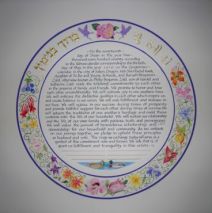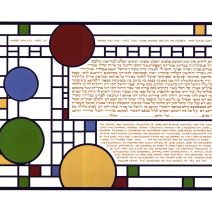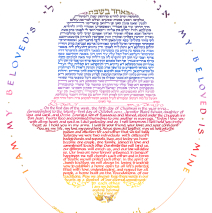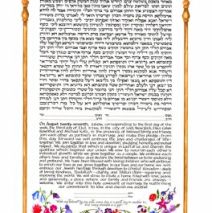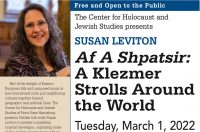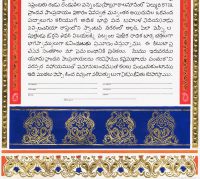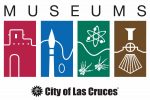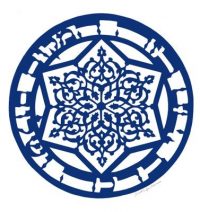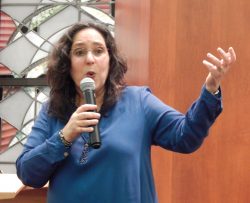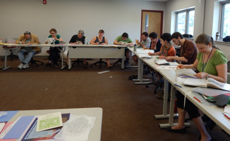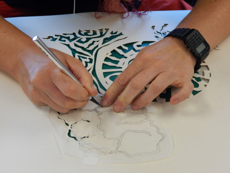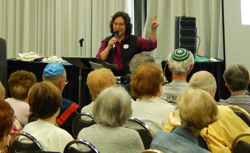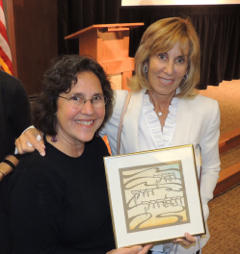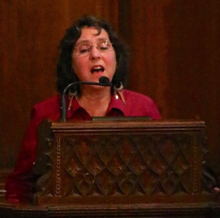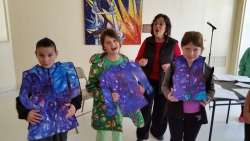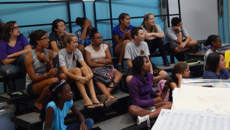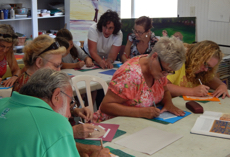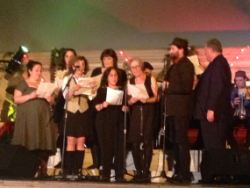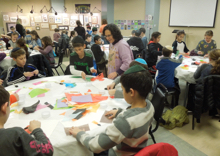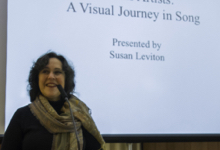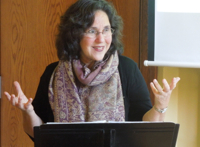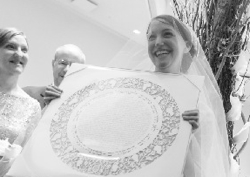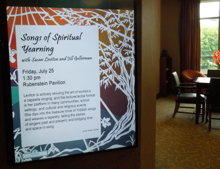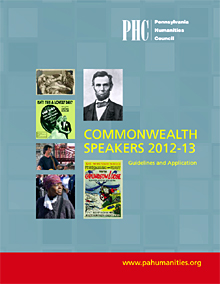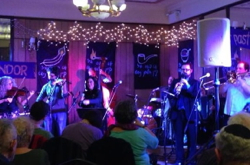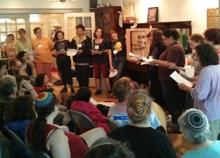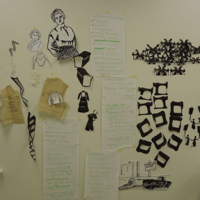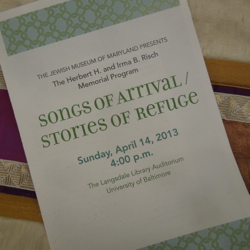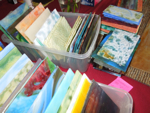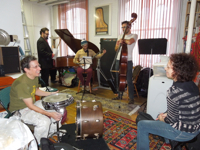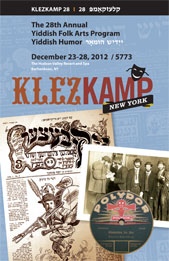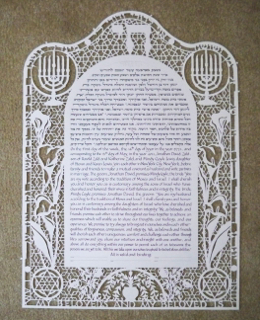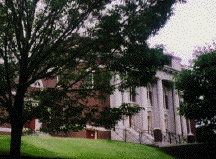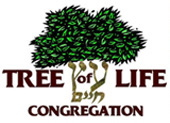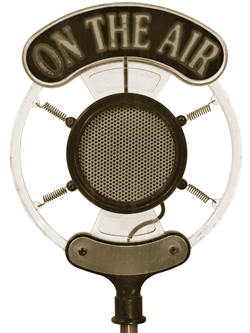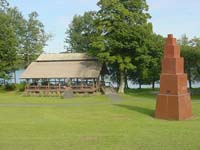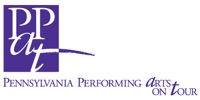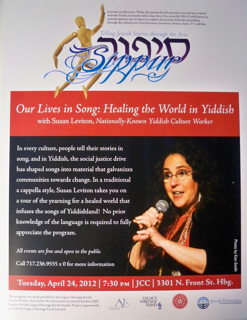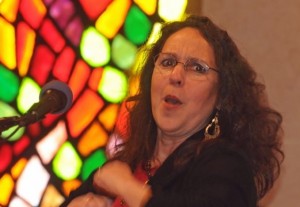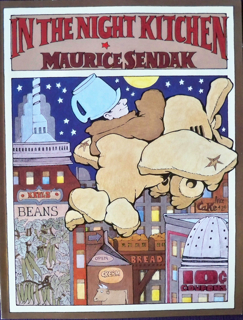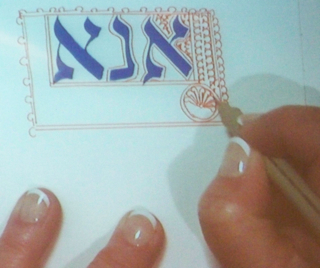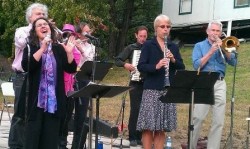Desert Rose Ketubah
Desert Rose Ketubah As unlikely as it seems, the flowering plant pictured is indeed the desert rose. One of the biggest challenges that I face as a designer is to create something unified and beautiful out of the imagery and text supplied by my clients. This one proved to be a challenge because the couple insisted upon the actual flowering desert rose (described by some as a blooming elephant’s leg!) as the central image. I looked through dozens of photographs and finally decided to put the plants on a short diet and emphasize the spectacular flowers instead of the mighty stems. My research gave me an emotional ‘hook’ as I read that the plant seems to exist on solid rock, sending its extremely strong roots down into barely visible crevices. What an image for a relationship, deeply rooted and as strong as can be, and beautiful as...
Read MoreJewish/Korean document
The two individuals who commissioned this document each have strong connections to their heritage and to their family’s roots. Thus a non-traditional marriage document was developed to honor the new intertwining of lives and customs. Though not a ketubah, the document is a witnessed contract of marriage, and highights the names of bride and groom in respective Korean and Hebrew. The symbols of a pair of ducks (who mate for life), cranes, and several of the specific flowers are all used in traditional Korean wedding ceremonies. I have been asked many times to make ‘ketubot’ for intermarried, and in some cases non-Jewish couples, and although I am always delighted to help people bring their visions (words and imagery) to life in a marriage contract, I am careful to explain that the term ketubah is a witnessed legal document of marriage between two Jews. As in all artistic life, the cross-pollination of cultures allows us today to bring that 2000-year old visual history into a new century and there’s no reason to restrict a healthy borrowing of styles and intentions. I just clarify that what we call a ketubah is true to the meaning of the term and that we appropriately honor the identities of the individuals who are marrying. It’s therefore very important that the language we use and the language within the document itself be as honest as it is celebratory. ...
Read MoreFrank Lloyd Wright-inspired Ketubah
The couple who worked with me on this design loved the clean lines and visual balance of Frank Lloyd Wright’s geometric imagery. We determined that the overall shape would be horizontal, and examined several iconic Wright designs in order to identify just what grabbed them. I asked them to provide me with 4 or 5 color chips that would represent their palette and we were off! The biggest challenge was to fit the texts in Aramaic and English as well as the verse in the top section into sections of the design so they were fully integrated and balanced the colored circles and squares. An architect friend who saw the finished piece told me it was (til then, anyway!) her favorite among my calligraphic...
Read MoreHamsa Ketubah
Sometimes the most elegant way to illuminate text is to allow the text to be the illumination! Quite simply, the text here is the design. (This technique has a name: calligram.) This couple wanted their ketubah to be rich with the colors of sunset and they found the Hamsa shape compelling. Quite an engineering feat! Tiny raised gold leaf dots add sparkle to the design, and the finished document incorporates the witnesses’ signatures both within the body of the lettered text (after the Aramaic) and to complete the outer oval (following the English text below.) There are so many small decisions to be made, and where to put the lines for signatures is an example of part of that process. ...
Read MoreElul Huppah Ketubah
Creating this ketubah touched me deeply, as it was made for a dear friend who had been widowed. The English text of her first ketubah (which happened to be the first one I ever made) included an English line about the interwoven strands of the couple’s life. In celebrating this new love and life, I added an intricate papercut on the urn at the base – a mogen david comprised of intricately interwoven strands. The vessel itself is one that echoes the Tree of Life design seen in many cultures where green and flowering plants grow out of a container such as this one. The top of the huppah spells out the line from Song of Songs, “I am my beloved’s and my beloved is mine.” It is traditional that the initial letters of the four Hebrew words form an acronym for the month of Elul, most appropriate here as the wedding took place during that month. ...
Read More
